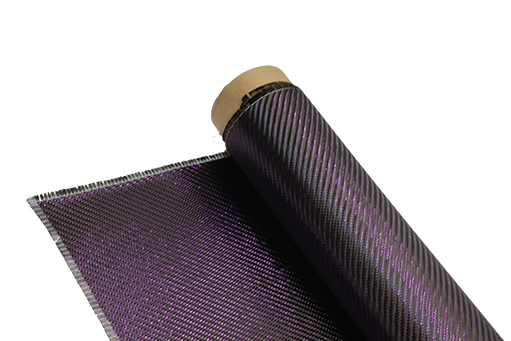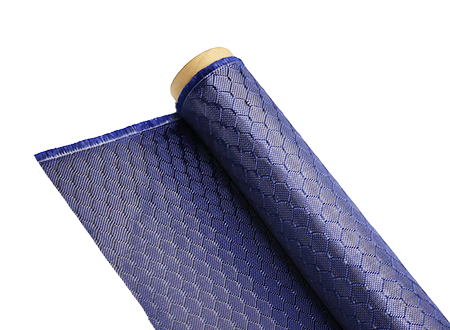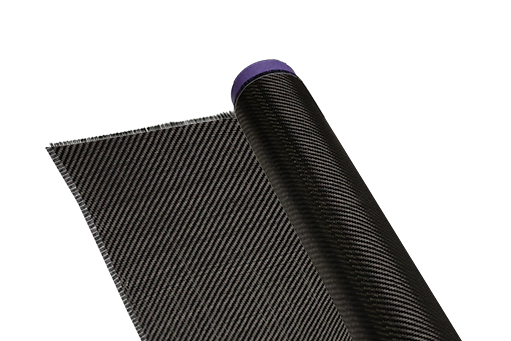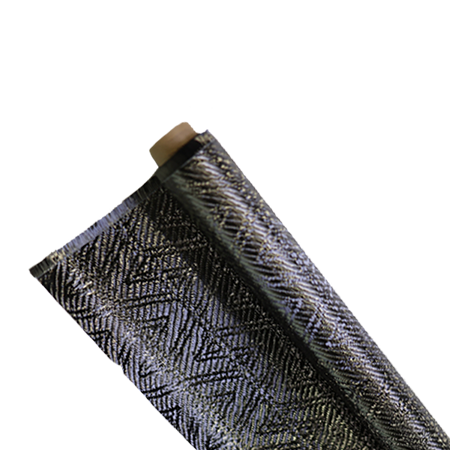Каковы показатели огнестойкости углеродной ткани?
-
Оглавление
“Unyielding Protection: Discover the Fire Resistance Ratings of Carbon Fabric.”
Введение
Fire resistance ratings of carbon fabric refer to the material’s ability to withstand high temperatures and resist ignition, which is crucial in applications such as aerospace, automotive, and protective clothing. These ratings are determined through standardized testing methods that assess the fabric’s performance under specific fire exposure conditions. Carbon fabrics are known for their high thermal stability, low flammability, and excellent mechanical properties, making them suitable for environments where fire resistance is essential. Understanding the fire resistance ratings helps manufacturers and consumers select appropriate materials for safety-critical applications.
Understanding Fire Resistance Ratings of Carbon Fabric
Understanding the fire resistance ratings of carbon fabric is essential for industries that prioritize safety and performance in high-temperature environments. Carbon fabric, known for its lightweight and high-strength properties, is increasingly utilized in various applications, including aerospace, automotive, and construction. However, the effectiveness of carbon fabric in resisting fire is a critical factor that must be considered when selecting materials for specific applications.
Fire resistance ratings are determined through standardized testing methods that evaluate how materials respond to fire exposure. These ratings provide valuable information regarding the duration and conditions under which a material can withstand flames and heat before failing. In the case of carbon fabric, its inherent properties contribute to its fire resistance, but the specific rating can vary based on the fabric’s composition, weave, and any additional treatments applied during manufacturing.
One of the primary factors influencing the fire resistance of carbon fabric is its thermal stability. Carbon fibers can withstand high temperatures, often exceeding 3000 degrees Fahrenheit, without significant degradation. This remarkable thermal stability is a result of the carbonization process, which transforms organic fibers into carbon fibers through high-temperature treatment. Consequently, carbon fabric exhibits excellent resistance to thermal degradation, making it suitable for applications where exposure to extreme heat is a concern.
Moreover, the fire resistance of carbon fabric can be enhanced through various treatments. For instance, manufacturers may apply fire-retardant coatings or incorporate additives that improve the material’s ability to resist ignition and slow down the spread of flames. These enhancements can significantly impact the fire resistance rating, allowing carbon fabric to meet or exceed industry standards for specific applications. It is essential for manufacturers and end-users to understand these treatments and their implications on the overall performance of the fabric in fire-prone environments.
In addition to thermal stability and treatment options, the construction of the carbon fabric itself plays a crucial role in its fire resistance. The weave pattern, thickness, and density of the fabric can influence how it behaves when exposed to flames. For example, a tightly woven carbon fabric may provide better protection against fire than a loosely woven variant, as the denser structure can impede the penetration of heat and flames. Therefore, selecting the appropriate weave and thickness is vital for achieving the desired fire resistance rating.
Furthermore, it is important to note that fire resistance ratings are not absolute; they are often categorized into classes based on performance during testing. For instance, materials may be rated as Class A, B, or C, with Class A indicating the highest level of fire resistance. Understanding these classifications helps manufacturers and engineers make informed decisions when selecting materials for specific applications, ensuring compliance with safety regulations and standards.
In conclusion, the fire resistance ratings of carbon fabric are influenced by several factors, including thermal stability, treatment options, and fabric construction. As industries continue to seek materials that offer both performance and safety, carbon fabric stands out as a viable option due to its impressive fire-resistant properties. By understanding the nuances of fire resistance ratings, stakeholders can make informed choices that enhance safety and performance in their respective fields. Ultimately, the ongoing development and testing of carbon fabric will likely lead to even greater advancements in fire resistance, further solidifying its role in high-performance applications.
Applications of Carbon Fabric in Fire-Resistant Materials

Carbon fabric has emerged as a significant material in various industries, particularly due to its impressive fire resistance properties. This unique characteristic makes it an ideal choice for applications where thermal protection is paramount. The inherent properties of carbon fibers, including their high thermal stability and low thermal conductivity, contribute to their effectiveness in fire-resistant materials. As industries increasingly prioritize safety and performance, the demand for carbon fabric in fire-resistant applications continues to grow.
One of the most notable applications of carbon fabric is in the aerospace sector. Aircraft components are subjected to extreme temperatures and potential fire hazards, necessitating materials that can withstand such conditions. Carbon fabric is often utilized in the manufacturing of fire-resistant panels and insulation materials, providing essential protection for both the aircraft structure and its occupants. The lightweight nature of carbon fabric, combined with its fire resistance, allows for enhanced fuel efficiency without compromising safety.
In addition to aerospace, the automotive industry has also recognized the advantages of carbon fabric in fire-resistant applications. High-performance vehicles, particularly those designed for motorsports, require materials that can endure high temperatures and resist combustion. Carbon fabric is frequently used in the production of heat shields, interior components, and racing suits for drivers. These applications not only enhance safety but also contribute to the overall performance of the vehicle, as the lightweight properties of carbon fabric help improve speed and handling.
Moreover, the construction industry has begun to incorporate carbon fabric into fire-resistant materials, particularly in the development of protective coatings and reinforcement systems. Buildings and infrastructure must adhere to stringent fire safety regulations, and carbon fabric can be integrated into various construction materials to enhance their fire resistance. For instance, carbon fiber-reinforced polymers (CFRPs) are increasingly used in retrofitting existing structures to improve their fire performance. This application not only extends the lifespan of buildings but also ensures compliance with modern safety standards.
Furthermore, the military and defense sectors have also adopted carbon fabric for its fire-resistant properties. Personal protective equipment, such as uniforms and body armor, often incorporates carbon fabric to provide soldiers with enhanced protection against thermal threats. The ability of carbon fabric to withstand high temperatures while remaining lightweight is crucial in combat situations, where mobility and safety are of utmost importance. As a result, the integration of carbon fabric into military applications has become a standard practice, reflecting its reliability and effectiveness.
In the realm of firefighting, carbon fabric is utilized in the development of specialized gear designed to protect firefighters from extreme heat and flames. Fire-resistant suits made from carbon fabric not only provide thermal protection but also offer flexibility and comfort, allowing firefighters to perform their duties effectively. The combination of fire resistance and lightweight properties ensures that these professionals can navigate hazardous environments with greater ease.
In conclusion, the applications of carbon fabric in fire-resistant materials span a wide range of industries, including aerospace, automotive, construction, military, and firefighting. Its unique properties, such as high thermal stability and low thermal conductivity, make it an invaluable asset in enhancing safety and performance. As technology continues to advance, the potential for carbon fabric in fire-resistant applications is likely to expand further, paving the way for innovative solutions that prioritize both safety and efficiency.
Testing Methods for Fire Resistance Ratings of Carbon Fabric
The fire resistance ratings of carbon fabric are determined through a series of standardized testing methods designed to evaluate the material’s performance under high-temperature conditions. These tests are crucial for industries where fire safety is paramount, such as aerospace, automotive, and construction. Understanding the testing methods employed to assess fire resistance ratings provides insight into the reliability and safety of carbon fabric in various applications.
One of the most widely recognized testing methods is the ASTM E84, also known as the “Standard Test Method for Surface Burning Characteristics of Building Materials.” This test evaluates the flame spread and smoke development of materials when exposed to a controlled flame. During the test, a sample of carbon fabric is placed in a testing chamber, where it is subjected to a flame for a specified duration. The results yield a flame spread index and a smoke developed index, which are critical for determining the material’s suitability for use in environments where fire hazards are a concern. A lower flame spread index indicates better fire resistance, making the material more desirable for safety-critical applications.
In addition to ASTM E84, the ISO 5660 test method is also employed to assess the fire behavior of carbon fabric. This method involves exposing the material to a heat source in a controlled environment, measuring parameters such as heat release rate, total heat release, and mass loss. The data obtained from this test provides a comprehensive understanding of how the carbon fabric reacts to fire, including its ability to resist ignition and the rate at which it burns. The results are essential for manufacturers and engineers who need to ensure that the materials they use meet stringent fire safety standards.
Another important testing method is the UL 94 test, which evaluates the flammability of plastic materials, including those that may be combined with carbon fabric. This test categorizes materials based on their burning characteristics, such as whether they extinguish themselves after the flame is removed or continue to burn. The classifications range from V-0, indicating the highest level of flame resistance, to V-2, which allows for some dripping of burning material. Understanding these classifications helps manufacturers select appropriate carbon fabric composites for specific applications, ensuring compliance with safety regulations.
Moreover, the cone calorimeter test, as outlined in ISO 5660-1, is another critical method for assessing the fire performance of carbon fabric. This test measures the heat release rate and other combustion characteristics in a controlled environment. By analyzing the data, researchers can determine the material’s ignition time, peak heat release rate, and total heat release, providing a detailed profile of its fire behavior. This information is invaluable for engineers designing fire-resistant structures or components, as it allows for informed decisions regarding material selection.
In conclusion, the fire resistance ratings of carbon fabric are established through a variety of rigorous testing methods, each designed to evaluate different aspects of fire performance. From ASTM E84 to ISO 5660 and UL 94, these tests provide essential data that informs manufacturers and engineers about the safety and reliability of carbon fabric in fire-prone environments. As industries continue to prioritize fire safety, understanding these testing methods becomes increasingly important, ensuring that carbon fabric meets the necessary standards for protection against fire hazards.
Вопросы и ответы
1. **What is the fire resistance rating of carbon fabric?**
Carbon fabric typically has a fire resistance rating that can withstand temperatures up to 3000°F (1649°C) without significant degradation.
2. **How does carbon fabric compare to other materials in terms of fire resistance?**
Carbon fabric generally offers superior fire resistance compared to many synthetic fabrics, such as polyester or nylon, which can melt or ignite at lower temperatures.
3. **Are there specific standards for testing the fire resistance of carbon fabric?**
Yes, carbon fabrics are often tested according to standards such as ASTM E84 (Standard Test Method for Surface Burning Characteristics of Building Materials) and NFPA 701 (Standard Methods of Fire Tests for Flame Propagation of Textiles and Films).











